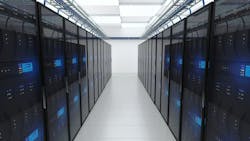Biggest Risks Impacting Your Building in 2019
What are you worried about in 2019?
The World Economic Forum recently named extreme weather as the biggest risk on a global scale this year, followed by concerns over climate change.
Climate change leapfrogged to the second spot from its fifth-place rank last year, due in part to worsening international relations that make it harder to adapt on a global scale. However, its impacts are felt down to the individual building level.
In fact, four of the top five problems on the 2019 World Economic Forum Global Risks Report have serious implications for facilities managers.
Here’s how this year’s four biggest global risks affect you and your facility.
1. Extreme Weather
Storms that are stronger and more frequent than those in years past are a concern for any facilities manager. Buildings are built based on an understanding of past weather hazards. When those hazards get more severe, you may end up with higher flood waters, longer droughts and bitter winters that your building wasn’t built to handle.
[Related: Healthcare & Hurricanes: Building Resilience for Critical Facilities]
Mitigating the impacts of extreme weather starts with looking at your building’s vulnerabilities and the types of weather that are typical for your region. For example, areas with extremely cold winters and hot summers can expect both of those seasons to get more extreme as the years go by. If your building is in a location like that, it might be worth investing in redundancy for both heating and air conditioning.
BUILDINGS Podcast
The HFC Refrigerant Phase Out
[podcast]
Christoph Trappe speaks with Mark Menzer, director of public affairs with Danfoss, about what facility managers and building owners should know about the evolving HFC refrigerant phase out and what you can do to move forward. Listen now >>
2. Failed Climate Change Mitigation
The impact of climate change is most evident in the role it’s believed to play in two other entries on the list, extreme weather (No. 1) and natural disasters (No. 3). Nearly every aspect of operating a building is impacted by the climate, such as:
- Stormwater mitigation, which might not be capable of handling the more severe rains of the future
- Drier and more arid areas that carry an increased risk of fire, requiring buildings to beef up fire detection, mitigation and suppression infrastructure
- Warmer summers, which drive up energy costs through an increased demand for air conditioning (a phenomenon that then places extra strain on the electrical grid)
- Higher winds that can impact the roof, especially for buildings in areas that haven’t previously required high wind uplift resistance
[More: A Case for Future-Proofed Indoor Location Services]
3. Natural Disasters
Natural disasters have remained in the top five for several years, and for good reason. The same flaws that make existing buildings vulnerable to extreme weather naturally mean that disaster-level weather events are also a threat.
Even if you’re compliant with the latest building codes, that doesn’t necessarily mean your building will be functional after a natural disaster – or even a severe weather event, for that matter. It only means that the building won’t fail catastrophically in the middle of the storm. People will be able to get out safely, but you might not be able to continue operating your building right away.
Look at ways to shore up your existing defenses or otherwise mitigate the impact from natural disasters. In some cases, that might mean hardening your building to keep the elements out. In others, you might focus on ways to let the storm pass through with the least possible interference in normal operations.
For example, concrete construction and a lack of soft surfaces in parking facilities and ground-level building floors allows flood water to move in and out without contaminating any porous materials.
You’ll also need a strong business continuity plan that will allow your organization to keep functioning even if some or all of the building is temporarily closed.
Help BUILDINGS Shape 2019!
What BUILDINGS resources are most valuable to you? What would you like to see us provide?
Please take our short (under 2 minutes) survey - just 5 short questions.
Thank you!
4. Cyber Attacks
The exponential growth in the use of Internet of Things devices is opening businesses up to new security concerns. The 2017 release of UL’s cybersecurity standards for physical security systems will close some of the loopholes, but IoT-enabled controls for lighting, HVAC and other systems still need to be adequately secured.
Altman Vilandrie & Company, a strategy consulting firm, noted in 2017 that 48 percent of surveyed firms had experienced an IoT security breach at least once.
[From AHR Expo: 3 Tips to Improve Facility Cybersecurity]
Smaller companies can see financial damages of more than 13 percent of their total revenue, while larger companies have noted losses in the tens of millions of dollars, the firm explains. These security breaches are avoidable, but the facilities department needs to work closely with the IT department to ensure that facilities technology isn’t exposing the whole building to a potential security breach.
Facilities departments can’t reverse global trends, but you can improve how well your building can weather them. Investigate resilience improvements today to see how you can set your building up for success.
Two handpicked articles to read next:
About the Author
Janelle Penny
Editor-in-Chief at BUILDINGS
Janelle Penny has been with BUILDINGS since 2010. She is a two-time FOLIO: Eddie award winner who aims to deliver practical, actionable content for building owners and facilities professionals.



